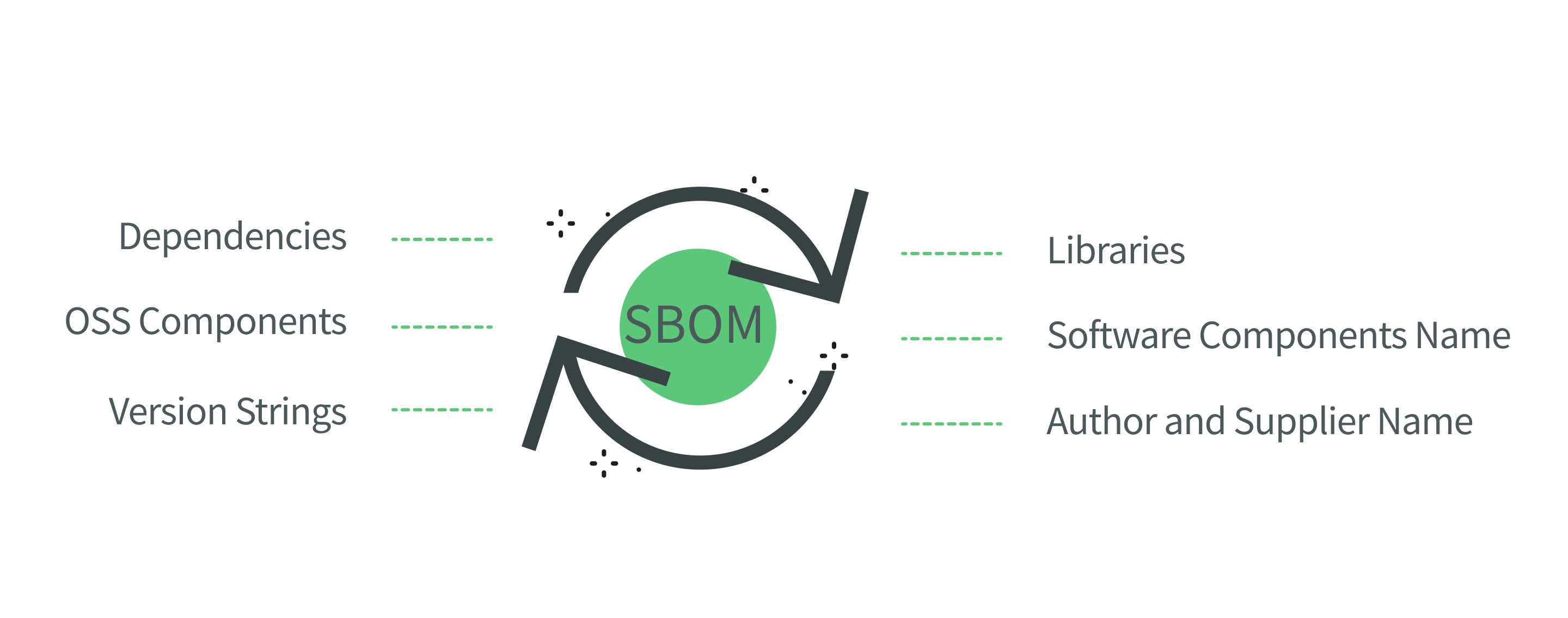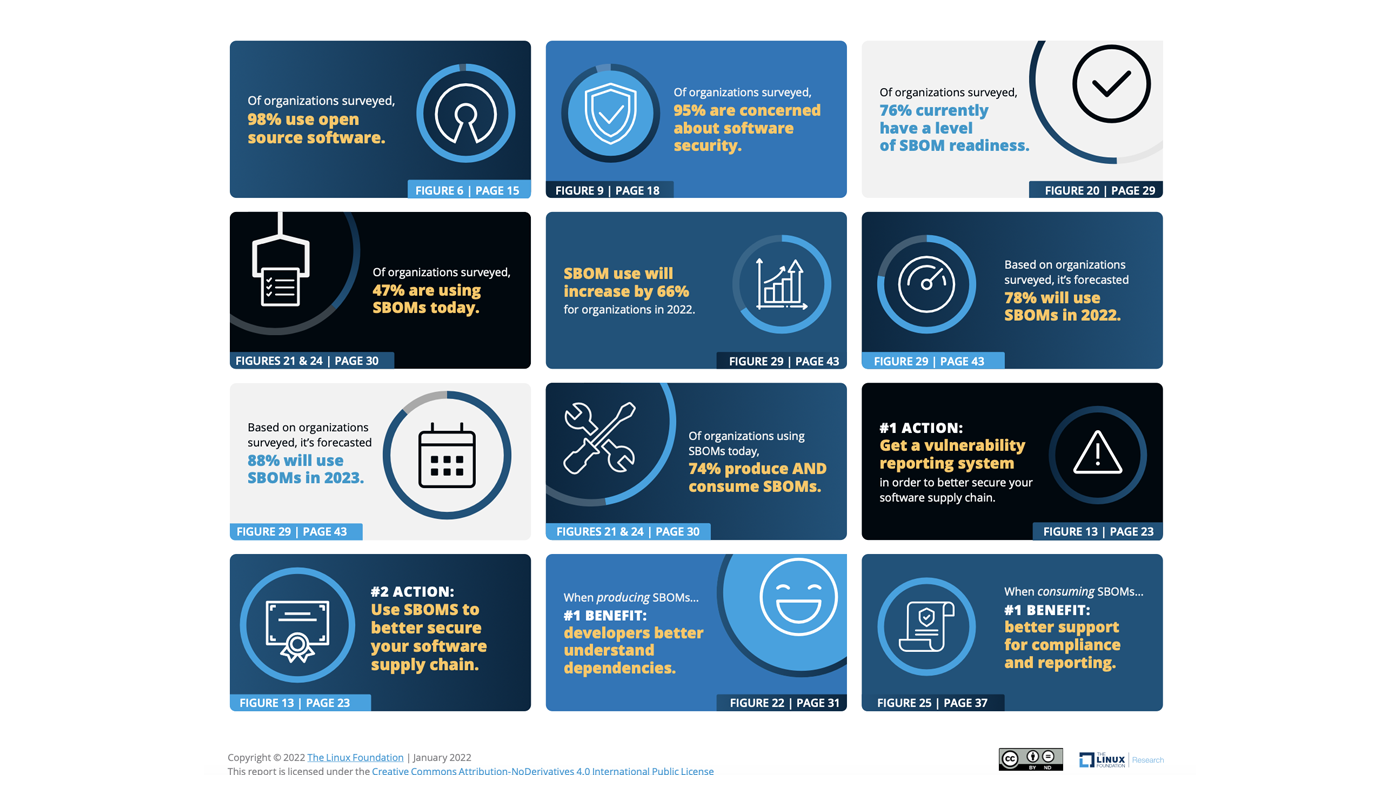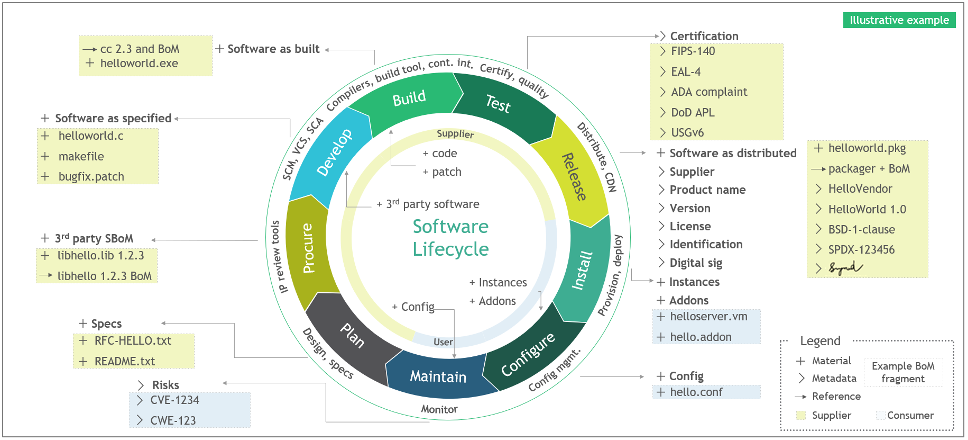SBOM: The Essential Building Block for Cybersecurity
Software Bill of Materials (SBOMs) is how companies provide a comprehensive inventory of all the components, libraries, and dependencies used in a software system. This information helps organizations identify potential vulnerabilities and manage the risk of software supply chain attacks.

SBOM is a detailed list of all the components, libraries, and dependencies that make up a software system. It includes information such as the names and versions of the components, their sources, and any associated risks or vulnerabilities.
Just as a supply chain document in manufacturing and product development outlines the origin and journey of raw materials and components, a software bill of materials (SBOM) does the same for software components.
SBOM Adoption via Executive Order from the EEUU
On May 12, 2021, President Joe Biden released the Executive Order (EO) on Improving the Nation’s Cybersecurity with a specific requirement for SBOMs. Read here the executive order.
SBOM includes information on their origin, version, and security risk. Just as manufacturers rely on supply chain documentation to ensure the quality and safety of their products, organizations can use SBOMs to manage software supply chain risks and ensure the security and compliance of their software systems. In both cases, having accurate and up-to-date information is critical to making informed decisions and avoiding potential harm.
Since December 2022, in its v4.9.0, N|Solid has SBOM support (Software Bill of Materials).
N|Solid has added support for SBOM reporting in all applications connected to the N|Solid console; the report is offered in two formats: JSON and PDF; it contains the information for the dependency inventory of a specific application; it includes valuable information like licensing and the security status for each dependency used.
The role of SBOM:
The Linux Foundation released the results of a survey: The State of Software Bill of Materials (SBOM) and Cybersecurity Readiness, carried out within the framework of the US presidential order on SBOM, where 412 organizations worldwide participated in a survey. Here is the infographic with the highlights.

With the ever-increasing use of third-party components in software development, having an accurate and up-to-date SBOM is essential for ensuring the security and integrity of a company's software systems; an organization can use SBOMs for many purposes. Some of them are:
Allow organizations visibility and control over their software supply chain, enabling them to make informed decisions about software security, compliance, and licensing.
Companies can proactively manage software risk, improve their cybersecurity posture, and protect their customers and critical data.
Comply with industry standards and regulations. This refers to the process of ensuring that an organization is using software in accordance with its license agreements. This includes ensuring that the software is being used within the terms of the license agreement and that the organization uses only the licenses it has purchased.
Compliance and customer Audit. Ensure that it meets the specified quality criteria. This may include testing, inspections, and reviews to identify any issues or defects and make sure that the product or service meets the customer's requirements and the high standards of quality that the industry expects.
Despite the clear benefits of SBOMs, the use of SBOMs has traditionally been limited to more than just the largest and most advanced organizations. However, the increasing threat of software supply chain attacks and the growing recognition of the importance of SBOMs are expected to drive the widespread adoption of SBOMs in the near future.
The United States Executive Order on the Nation's Cybersecurity outlines new requirements for SBOMs and other security measures for software used by federal agencies. This order highlights the importance of SBOMs in ensuring the security of software systems and demonstrates the growing recognition of their value in the industry.
Implementing SBOM in Your Organization
Companies are increasingly aware of their risks by needing to be clearer about their technologies, especially in the open-source ecosystem. according to the Linux Foundation survey, what are the key activities for securing the software supply chain? These answers serve as a basis for understanding the importance of this concept in the ecosystem.
Understanding the process of implementing an SBOM in your organization, from assessing your current software landscape to integrating the SBOM with your existing security and compliance tools, will help you to effectively manage software supply chain risks and ensure the security and compliance of your software systems.
-
Assessment: The first step is to assess the organization's current software landscape and identify which software systems and components need to be included in the SBOM.
-
Inventory: Once the software systems and components have been identified, the next step is to create an inventory of all the components and their attributes, such as name, version, source, and any associated risks or vulnerabilities.
-
Automation: To ensure the SBOM is accurate and up-to-date, consider automating the SBOM creation process through tools or scripts that can extract information from source code and dependencies.
-
Integration: The SBOM should be integrated with the organization's existing security and compliance tools, such as security assessment and license compliance tools, to ensure that the information contained in the SBOM can be effectively utilized.
-
Monitoring: Regular monitoring of the SBOM should be implemented to ensure that it remains up-to-date and that any changes or updates to software components are accurately reflected in the SBOM.
-
Review: The SBOM should be regularly reviewed to identify potential security risks or vulnerabilities and ensure compliance with industry standards and regulations.
-
Training: Finally, provide training to all relevant personnel, including developers and security teams, to ensure that the SBOM is being used effectively and that everyone understands the importance of keeping the SBOM up-to-date.
By following this path, organizations can effectively implement an SBOM and use it to manage software supply chain risks, improve their overall cybersecurity posture, and ensure compliance with industry standards and regulations.
Securing Your Software Supply Chain with N|Solid
N|Solid is a runtime, and a console for managing Node.js applications, providing a secure and reliable runtime environment for Node.js applications developed and distributed by NodeSource. N|Solid includes a range of features to help organizations, including security and performance monitoring, real-time visibility into applications, and the ability to identify and resolve issues quickly.
N|Solid Console has a dedicated section for NodeSource Certified Modules. (NCM) are a set of open-source npm packages vetted and certified by NodeSource, a company specializing in Node.js solutions. The certification process involves thorough security, quality, and compatibility testing to ensure that these modules meet high standards for security and performance.
By using NodeSource Certified Modules, organizations can be confident that they are using high-quality, secure, and reliable components in their Node.js applications. In addition, NodeSource provides ongoing maintenance and support for these modules, ensuring that they continue to work effectively and securely over time. By using NodeSource Certified Modules, organizations can simplify the process of selecting and using npm packages in their Node.js applications, helping to ensure that their applications are secure, reliable, and performing optimally for their users.
__NCM enables you to quickly and easily generate SBOMs that: __
- Identify all open-source libraries.
- Track and document each component, including direct and transitive dependencies.
- Update automatically when components change.
- Identify vulnerabilities.
- Provide a path to remediation that ensures updates are backward compatible and won’t break the build.

Illustrative Example of Software Life Cycle and Bill of Materials Assembly Line
According to the SBOM document, to stay compliant, the data fields that must be in an SBOM are:
- Component name
- Component version
- Unique identifier for the software
- Relationship with other dependencies
- Developer name
- Name of tool used to create the SBOM document
- Document creation date and time
N|Solid complies with the National Institute of Standards and Technology (NIST) laying out the guidelines for an SBOM document.
Conclusion:
SBOMs are an important tool in the fight against software supply chain attacks. Organizations can better track and manage their software components and identify potential risks by incorporating them into the software development process. In addition, SBOMs provide valuable insights into the supply chain history of a product, helping to ensure that all components are sourced from reputable and trustworthy sources.
As a company, ensuring the security of the code and systems you use and create is important. That’s why it is truly important:
- To ensure the security of open-source components in your supply chain, it is crucial to track their licenses, vulnerabilities, and associated risks.
- To avoid coding security defects and weaknesses, it is important to know common attack methods such as buffer overflows, SQL injection, and cross-site scripting. Vulnerabilities can be difficult to identify, as someone often plants malicious code with in-depth knowledge of the system.
- To secure your development and delivery infrastructure, it is recommended to conduct a binary analysis of the container images to inspect component signatures and identify any open-source components and sensitive data present.
- To ensure the security of APIs and protocols used for communication with other systems, a lack of visibility and control can put critical systems and sensitive information at risk.
However, implementing SBOMs effectively can be a complex and time-consuming process, and organizations need to choose the right tools and processes to ensure the accuracy and relevance of their SBOMs. We are sure that N|Solid can help! 💪
If you are interested in more information about the supply chain and its associated risks, please contact us at info@nodesource.com or on Twitter @nodesource. To get the best out of Node.js, try N|Solid SaaS #KnowYourNode